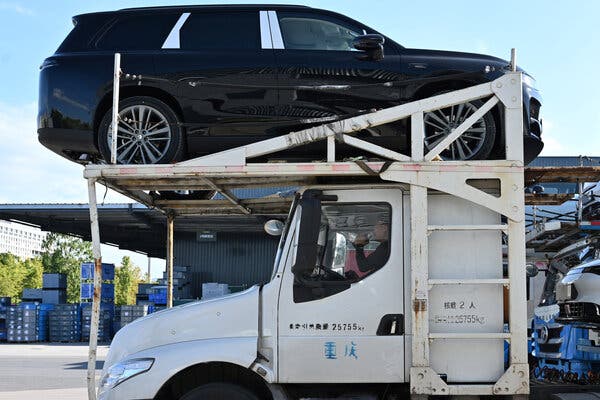Federal officials acknowledged that few Chinese vehicles were on U.S. roads now, but said that the administration wanted to take proactive measures to strengthen national security.

The Biden administration announced a sweeping initiative on Monday to ban Chinese-developed software from internet-connected cars in the United States, justifying the move on national security grounds. The action is intended to prevent Chinese intelligence agencies from monitoring the movements of Americans or using the vehicles’ electronics as a pathway into the U.S. electric grid or other critical infrastructure.
The move, most likely the last major cutoff of Chinese products into the United States under the Biden administration, follows the same logic that resulted in the ban on Huawei telecommunications equipment and the investigations into Chinese-made cranes operating at American ports.
Combined with the effort by Congress to force TikTok to cut its ties with its Chinese owners, the initiative is a major addition to the administration’s efforts to seal off what it views as major cybervulnerabilities for the United States. But the effort has, in effect, begun to drop a digital iron curtain between the world’s two largest economies, which only two decades ago were declaring that the internet would bind them together.
Briefing reporters, administration officials said that national security concerns, not politics, drove the Commerce Department to propose the ban, which officials said would probably be made a permanent rule before President Biden leaves office on Jan. 20. This year, Mr. Biden announced 100 percent tariffs on Chinese electric vehicles, saying they were wildly subsidized in China. The announcement was notable because such cars had barely begun to enter the U.S. market — and Mr. Biden explicitly cast it as a way of keeping jobs in America.
“Many of these technologies collect large volumes of information on drivers,” Jake Sullivan, Mr. Biden’s national security adviser, told reporters on Sunday. They also connect constantly with personal devices, with other cars, with U.S. critical infrastructure and with the original manufacturers of vehicles and components.
He added: “And for that reason, connected vehicles and the technology they use bring new vulnerabilities and threats, especially in the case of vehicles or components developed in the P.R.C. and other countries of concern,” he said, using the initials for the People’s Republic of China.



